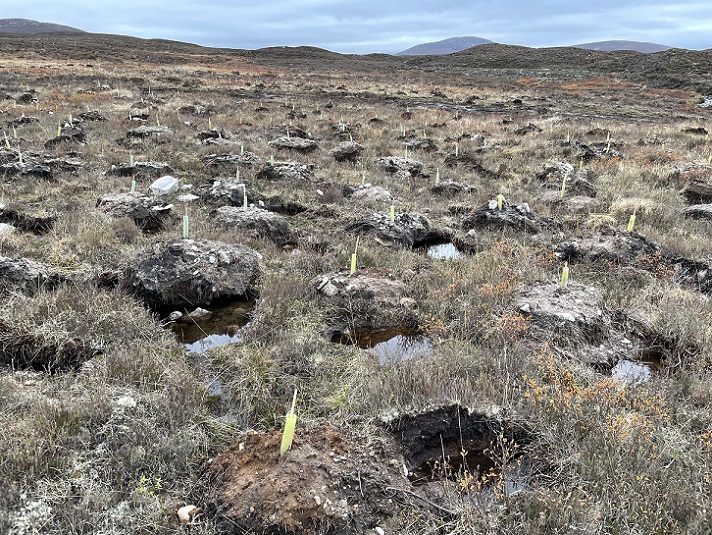
The basic elements of the the scandal concerning abrdn’s proposed sale the Far Ralia estate in the Cairngorms National Park are very simple. Having bought the land now known as the Far Ralia estate for a reported £7.5m in September 2021, Abrdn are now trying to dispose of it for £12m having in the intervening period been awarded £2,523,301.96 in forestry grants and registered the scheme under the Woodland Carbon Code. In effect Scottish Forestry, which is responsible for both the forestry grants system and for the Woodland Carbon Code, has been using its powers and resources to aid and abet private financial speculation in land
Background
In September 2021 the Standard Life Property Income Trust (SLIPIT) bought part of the Ralia estate, on the east side of the A9 opposite Newtonemore, for a reported £7.5m (see here). (The purchase price has still not been officially recorded on the Registers of Scotland see here). SLIPIT was subsequently renamed APIT (the Abrdn Property Income Trust) as a result of the merger of Standard Life with Abrdn. Earlier this year Abrdn decided to dispose of APIT but in March shareholders rejected a management proposal to sell it to the Custodian Real Estate Investment Trust (REIT) and instead decided to wind up APIT and sell off its assets (see here).
While no longer apparently interested in investing in business property, Abrdn is in the process of developing a “natural capital” investment fund. Their head of natural capital investment, whom I have met, was quoted in the news release announcing the sale. That interest in “natural capital” begs the question as to why Abrdn did not just buy Far Ralia from APIT rather than disposing of the estate? The answer appears to be that it is no longer interested in owning the land itself, only the carbon offsetting and other “natural capital” units that come with it.
While in the medium term such an approach could help replace speculation in land-ownership by investment in land-management, in the short-term nature Abrdn’s decision to sell Far Ralia provides an egregious example of how private companies are profiting from public subsidies for woodland and peatland restoration and the whole carbon offsetting system backed by Scottish Forestry and the Scottish Government.
How forestry grants, peatland restoration & the woodland carbon code has profited abrdn
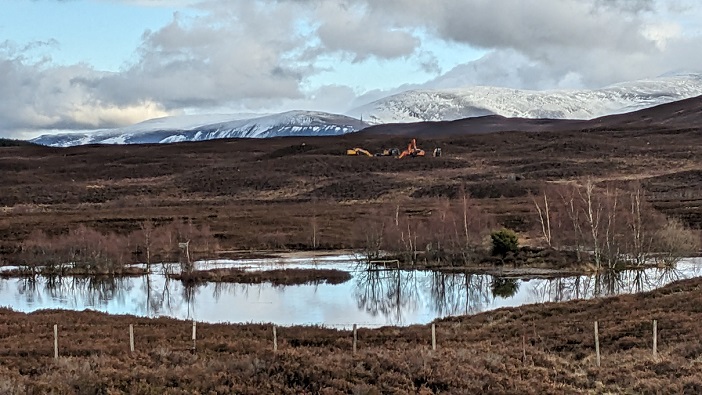
While the Knight Frank sales brochure (see here) does not put a price on Far Ralia, the news release (link above) refers to “the £12m estate”. That is £4.5m more than the purchase price three years ago. Over half of that increase can be attributed to the £2,523,301.96 grant awarded by Scottish Forestry to plant trees:

While the forestry grant that has been awarded is payable over six years and its value is dependant on most of the trees that have been planted surviving, the outstanding amount – prospective buyers will want to establish how much of the £912,004 awarded for 2024 has been claimed by Abrdn to date – represents a more or less guaranteed return on any investment. Hence, in part, why Abrdn is now hoping to realise £12m for the land it bought for £7.5m.three years ago.
Under the terms of Scottish Forestry’s contract there is nothing to prevent those awarded grant selling the land or profiting from it, although any new owner must have their business plan approved by Scottish Ministers:
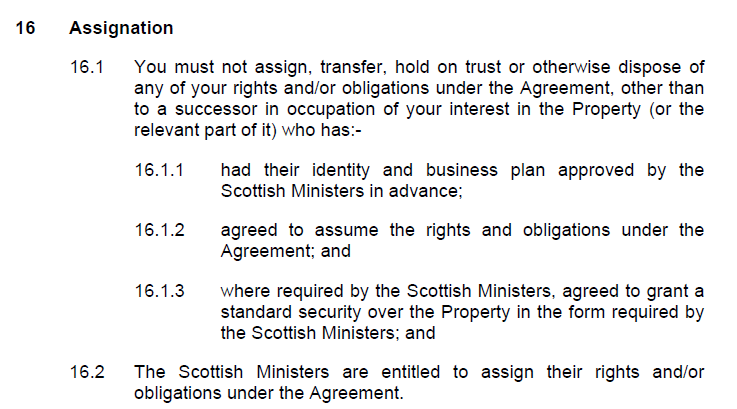
While Scottish Forestry’s contract in this case is with abrdn Property Holdings Ltd and was sent to an address in Edinburgh (see below), abrdn Property Holdings Ltd is actually registered in Guernsey (see here) and is owned by APIT, which is also registered in Guernsey, a tax haven:

Both these companies have been registered in tax havens for a reason. I am no tax expert but whatever tax might be payable on the profits from the proposed sale, it is safe to conclude that won’t be more than it would have been if these companies had been registered in the UK. Any help on the tax implications would be welcome but at the very least Scottish Ministers should now be offering the public re-assurance that Scottish Forestry is not assisting tax avoidance by contracting with companies registered in tax havens.
AKRE, which has managed Far Ralia on behalf of Abrdn and is owned by Renwick Drysdale, the son of a trustee for the previous owners (see here), has claimed that the project combines “woodland creation” with “peatland restoration”. To date almost all of this has been funded by the public: in the case of any future peatland restoration this would be through the Cairngorms National Park Authority.
“There are areas of peat that have been drained in the past and these may qualify for peatland restoration funding and carbon units. The project managers estimate that there may be up to 494 acres or thereby of peatland with the potential for 23,000 carbon units over 100 years”
While this extract from the sales brochure suggests that at present no agreement has been reached about this the CNPA is under pressure to meet the Scottish Government’s peatland restoration targets, just as Scottish Foresty is with tree planting. Under the current scheme there would have no reason to refuse either abrdn or a future owner the funding. That prospect possibly adds another £250k to the sales value and abrdn’s potential profit.
(it also providers another illustration of the madness of paying landowners to dig up peat to plant trees in some places and restore it in others!
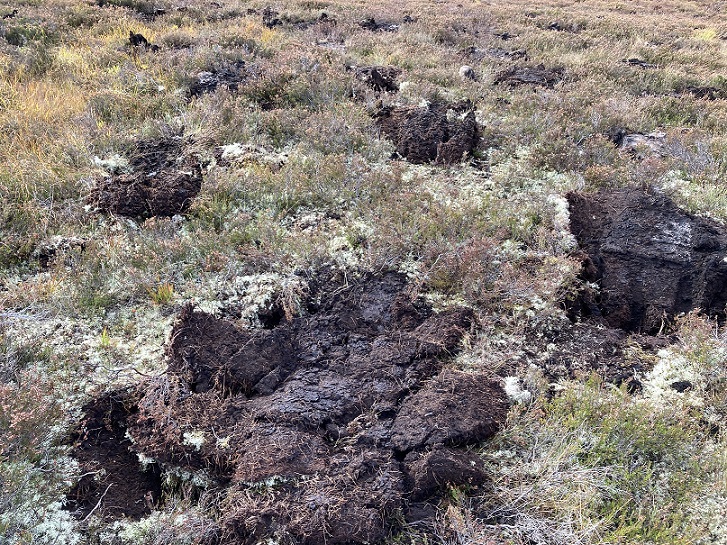
The final point to note in respect to the £12m price abrdn is asking is that while normally investment in capital depreciates over time (as machinery ages etc), land is a different type of capital asset and the woodland and peatland carbon codes have been designed so that the financial value of any investment increases rather than over time (as trees and bogs grow in size) – at least for the first 100 years. This makes investment in “natural capital” superficially very attractive: as long as government pays for the initial planting or peatland restoration, all the “investor” needs to do is sit and wait and the value of the “natural capital” to grow. Hence why, after taking all the public grants into account, abrdn thinks it can sell Far Ralia for another £1.75m over what it bought the land for three years ago.
There is only one problem……….. there is no longer any scientific basis for the way the value of natural capital is being calculated!
A natural capital & carbon offsetting and trading system built on deceit

Knight Frank’s sales brochure and news release are in my view full of spin and misrepresent the ecological value of land that is up for sale:
Claim: “An extraordinary 3,668-acre estate in the Cairngorms National Park”. Comment: in reality an overgrazed and overburned former grouse moor.
Claim: “The centrepiece is an extensive tree planting program that will see over 2,100 acres replanted with native Scots pine, birch, oak and other species to recreate the former Caledonian Pinewood ecosystem“. Comment: key characteristics and values of Scotland’s Caledonian pinewood remnants include their undisturbed soil and varied structure, completely the opposite to the new plantation at Far Ralia.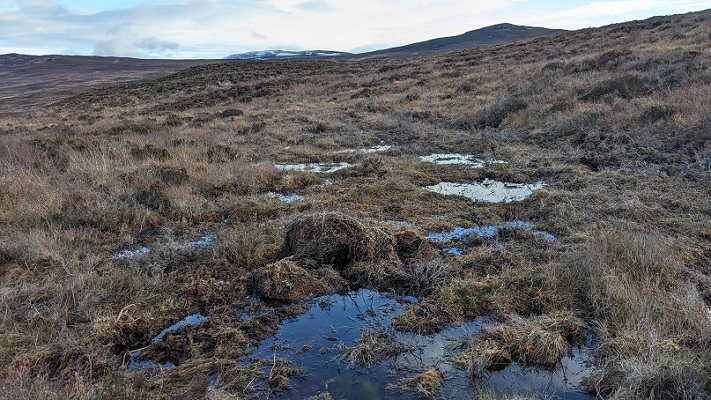
Claim: “Far Ralia’s current biodiversity levels sit just below 52% according to the Biodiversity Intactness Index. However, projections by the Natural History Museum [NHM] indicate that the regeneration plan will allow biodiversity to recover to a robust 94% over approximately 75 years, surpassing the safe planetary boundary”. Two pages of the brochure are devoted to graphs etc purporting to demonstrate this. Comment: the NHM’s application of the Biodiversity Intactness Index has not been peer reviewed, appears to have little if any scientific basis and raises lots of questions as I demonstrated here. Responses to FOI requests to the Natural History Museum about their support for this project, which I will consider in a further post, suggest that their so-called research was in fact driven more by financial interests rather than science.
(Incidentally the brochure also fails to mention that Akre widened the hill road through the estate without planning permission, having stated it intended to leave the road as it was, or that a retrospective planning application is still being considered by the CNPA (see here). That should have been shown as a liability on the brochure: given the sale price, there is clearly no question of abrdn being unable to afford some very high quality and expensive restoration work!)
The fundamental underlying issue here is that despite its extravagant claims, none of the methodogies referred to in the sales brochure as demonstrating the benefits of abrdn’s Far Ralia restoration scheme are fit for purpose.
The flaws in the Woodland Carbon code
The original idea behind the woodland carbon code calculator was a good one, that all woodland carbon offsetting schemes should have to measure any carbon emitted during their establishment and management against the amount of carbon absorbed from the atmosphere as the trees grew in size. In my view if we are serious about addressing climate change and reducing carbon emissions, every development and every business should have to carry out such calculations. It even led to the creation of Pending Issuance Units (PIUs), an acknowledgement that any benefits from tree planting would take a number of years to be realised and would need to be verified – hence why the front page of the Far Ralia sales brochure states “Estimated Total Piu to Projects (tCO2 e) – 346,409”.

Unfortunately,Scottish Forestry, which is the lead organisation for the Woodland Carbon Code across the whole of UK, has completely failed to update the initial assumptions underpinning the calculator in the light of research and has failed to regulate how it is applied in practice.
Research now shows that the original assumptions about tree planting being a good way of offsetting carbon totally underestimated the impact that this could have on soils, which store far more carbon. There are two main aspects to this (for an excellent scientific explanation of soil and the carbon cycle see here).
The first is that cultivation of soils, such as the mounding that has been used at Far Ralia, exposes its carbon content to the atmosphere and it then reacts with oxygen to release CO2. The organic carbon element of soils – ie the plant and animal matter – is particularly prone to this which is why cultivation of peat, which has the highest organic carbon element of any soil, is such as disaster.
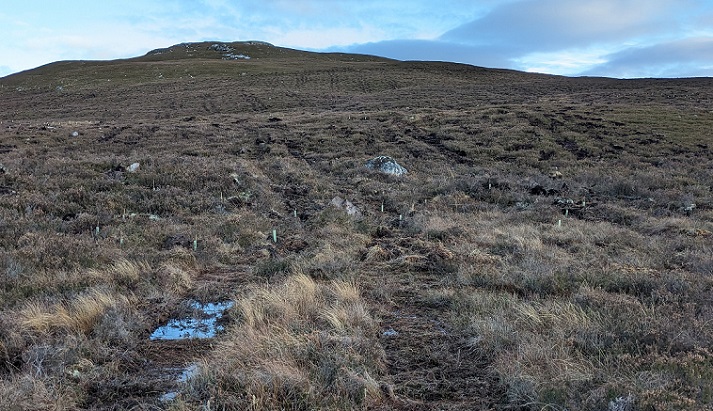
The second is that even where soils are not exposed to the atmosphere, trees still impact on the carbon cycle, adding carbon to the soils through their roots and vegetative matter as it decomposes but also releasing carbon through processes collectively known as “respiration”. Research by Friggens et al in 2020 (see here) showed that tree planting does not result in any increase in “net carbon sequestration rates” because it increases the rate at which carbon is released from the soil through respiration. They found the net impact varies between between tree species but in the case of birch, which account for a third of the trees planted at Far Ralia, the net effect of planting may be to release carbon into the atmosphere for 39 years!
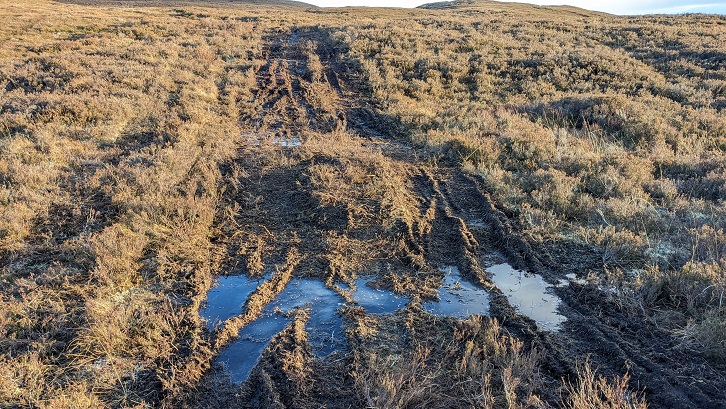
In the absence of other research which disproves these findings, the conclusion should be the woodland carbon code is not worth the Excel spreadsheet used to make the calculations! It completely fails to take proper account of soil science! Far from helping Scotland to reach net zero by 2045 therefore, the one million plus trees planted at Far Ralia to date through mounding are likely to have made the challenge even harder. From a market and common sense perspective, the implication is that the financial value of the natural capital at Far Ralia should now be considerably less than the £7.5m Abrdn spent on it!
If the truth about this became widely understood it would destroy the profits of companies like abrdn and reduce land values overnight. Unfortunately, Scottish Forestry is so embedded with private interests that it is incapable of reforming the current system and has become a major part of the problem. Those who care about the natural environment and climate change, however, can be reassured that at some stage the speculative market Scottish Forestry has created will at some stage burst, just like every other financial bubble.

The overvalution of woodland creation as a means of offsetting carbon is made worse because Scottish Forestry is failing to monitor the application of the Woodland Carbon Code calculator. Despite the disastrous nature of the tree planting schemes at Far Ralia, the Lost Forest (see here) and Muckrach (see here), there are significant differences between them because of factors such as soil type, the extent of mounding and fencing, the use of plastic tree tubes. One would expect these differences to result in different levels of carbon emissions during the woodland establishment stage and for these to be recorded on the woodland carbon code calculator.

It is notable therefore that the carbon calculations for BrewDog’s phase I Lost Forest and Far Ralia produce exactly the same result, carbon is shown as being emitted for 15 years after which there is a net gain:


This is not credible. For a start whatever my criticisms of BrewDog’s Lost Forest, the peaty soils appear from walks over the ground to be significantly shallower than those at Far Ralia and the mounding smaller and less intensive (that is a personal observation and would need to be verified by independent researchers). If I am correct that should have resulted in a longer period before “carbon sequestration” could be claimed at Far Ralia.
Whatever the comparison, when a large proportion of the trees BrewDog had planted last year died, the calculator should have been updated to reflect the carbon cost of replacing the dead trees and the “claimable date” put back. The calculator published on the carbon registry remained unchanged. Despite having verified the high death rate of trees Scottish Forestry failed to step in. It appears to have taken another year for BrewDog to acknowledge that the carbon value of its Lost Forest is worthless, as it effectively did when it announced last week it was abandoning both carbon offsetting and its carbon negative target (see here).
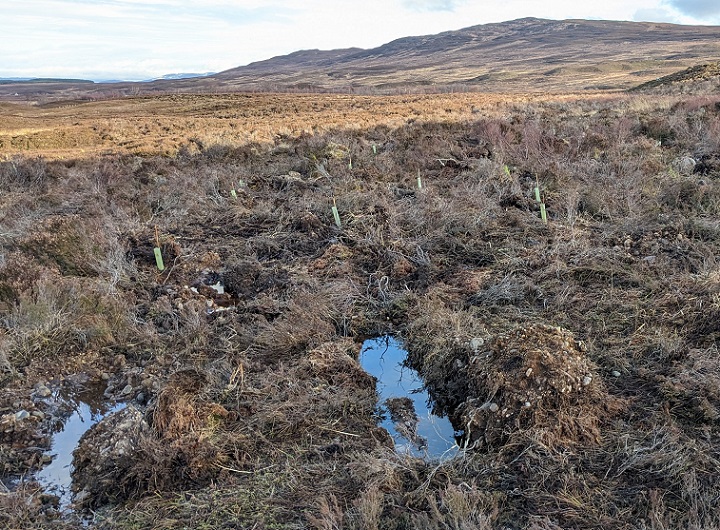
What casts even more doubt on abrdn’s carbon calculations are those for Muckrach, where again although the mounding is extensive is not from what I saw as destructive of soil (as opposed to vegetation) as that at Far Ralia:
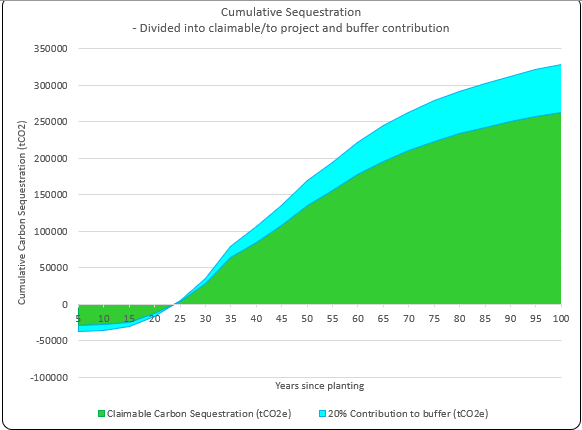
So if its going to take Muckrach 23 years to recover the carbon emitted from the scheme creation, why only 15 years at Far Ralia?
I suspect that abrdn has realised the whole scheme is suspect too, which would explain why they are so keen to offload Far Ralia three years after purchase. Unfortunately, instead of revealing the truth about their disastrous investment.to be learned and making others aware of the lessons to be learned, they have put their shareholders first and are trying to make a fast back.
There are many lessons that could be learned from this fiasco but rather than trying to spell those out now I will ask a question: how long will it be before the Cairngorms National Park Authority speaks out about the destruction and financial speculation going on under its nose rather than leaving this to a handful of campaigners?

Why are we giving public money to private corporations to destroy our environment and make climate change worse? It makes no sense. It deprives Scotland’s people of the opportunity to use our landscape for mutual benefit.
Mechanisms already exist to discourage short-term flipping of land purchases. These should be heavily used for any land ownership arrangement which receives public funding. For example, when I purchased a few acres of land privately, the vendor inserted a clause in the deeds that meant any development I made, which increased the value of the land, would result in a percentage of the uplift going to the original owner for a period of five years from the sale date. Grants of public money and sales of land previously held by the state should come with similar restrictions.
It is almost as if FLS and tScottish Ministers see their duty as being to supply a flow of lucrative deals to the private sector and to hell with the climate and the common good. Totally back-to-front.
The land was there for the people to enjoy and freely roam, as it is now. Nothing has changed, except the landscape will look better and be more biodiverse over the long term.
This post makes grim reading. The photographs on their own tell a sorry tale. This natural capital market idea seems to have taken over the government asylum. I have just read NatureScot’s announcement welcoming the inscription of the Flow Country on the list of UNESCO World Heritage Sites, which apparently unlocks “the potential of added value to new green finance models to attract global investment to the area”. I shudder to think what that might mean!
My reading is that the neoliberal natural capital agenda was given wings at COP26 when Nicola Sturgeon put Liz Lloyd in charge of Climate Change policy. It seems to have been driven more by zealous senior aides and officials than by Scottish Ministers themselves.
Natural capital markets operate at a global level. ScotGov has simply went along with it because everyone else seemed to be as well. ScotGov could have taken a different direction, but they did not. Ms Sturgeon was never really interested in anything rural. I cant see that either she or any of her staff had any pro-active or significant role at all. They just went with the flow.
I am well aware of Nicola Sturgeon’s lack of interest in rural policy. As you say, the Scottish Government could have taken a different path, but chose not to. Policy doesn’t just happen because people ‘go with the flow’. It happens because people make decisions and seek to implement them. Scottish Government officials spent a good part of the last decade re-arranging our environmental and forestry agencies to give us the dysfunctional framework we have now. That was purposeful. It wasn’t done inadvertently. Nicola Sturgeon put Liz Lloyd in charge of Climate Change policy. That was a decision. Lorna Slater chose to front a policy initiative which privileged the interests of private investors over long-standing policy objectives relating to environmental stewardship, land ownership and community empowerment. That was another bad decision.
Jane, oh how terrible….vasts areas of degraded peatland being restored and lots of rural jobs being created and rural contractors getting paid well to do it .
Shuddering stuff all round !!!
Are you not missing the point? So-called natural capital is on the one hand being used to restore peat and on the other to dig it up – what do you think should be done to resolve those contradictions?
Aye, it’s incredible how Scotland’s institutions with responsibility for looking after our nature have become champions of neoliberalism and global capitalism.
Ralia has been peat probed, so they should be planting trees on areas that are not defined as deep peat. If you want to stop this you need to change the peat classification system.
Ralia has been peat probed, so they should be planting trees on areas that are not defined as deep peat. If you want to stop this you need to change the peat classification system.
I agree but the IUCN UK Committee in 2020 put out a statement stating that the policy not to plant on peat 50cm deep was completely arbitrary and should be reviewed . Unfortunately that has been completely ignored probably because to review the ban on planting on peat 50cm deep so soon after adopting it would make government look stupid. If, however, those thinking of investing in the Woodland Carbon Code realise any woodland planted on peat is probably a liability that might change practice much more quickly than the current Scottish Government is likely to act.
“Carbon rich” soils, as opposed to peatland as such, can be as little as 5 cms. 12-15 cms of organic matter can contain as much carbon as a mature sitka spruce plantation, with no positive carbon balance in the first rotation. The consequence of acknowledging all this, based on science with nothing to contradict it, is losing 90 percent of your potential planting area.
A few points
Total acquisition cost incl investment of the land was £9,595,555 (see annual report)
They won’t get £12m for it. I pretty much guarantee you it will be less than £10m. So they’ll make a loss.
The “tax haven” of Guernsey is a red herring. API is a REIT, and REITs are exempt from capital gains tax whether they are domiciled in either Guernsey or the UK. There aren’t really any tax advantages of being in Guernsey, it’s just Guernsey has a lot of expertise in the practical aspects of running REITs.